Abstract
Improved health care in Nicaragua is a major priority of the Sandinista revolution; it has been pursued by major reforms of the national health care system, something few developing countries have attempted. In addition to its internationally recognized advances in public health, considerable progress has been made in health care delivery by expanding curative medical services through training more personnel and building more facilities to fulfill a commitment to free universal health coverage. The very uneven quality of medical care is the leading problem facing curative medicine now. Underlying factors include the difficulty of adequately training the greatly increased number of new physicians. Misdiagnosis and mismanagement continue to be major problems. The curative medical system is not well coordinated with the preventive sector. Recent innovations include initiation of a "medicina integral" residency, similar to family practice. Despite its inadequacies and the handicaps of war and poverty, the Nicaraguan curative medical system has made important progress.
Full text
PDF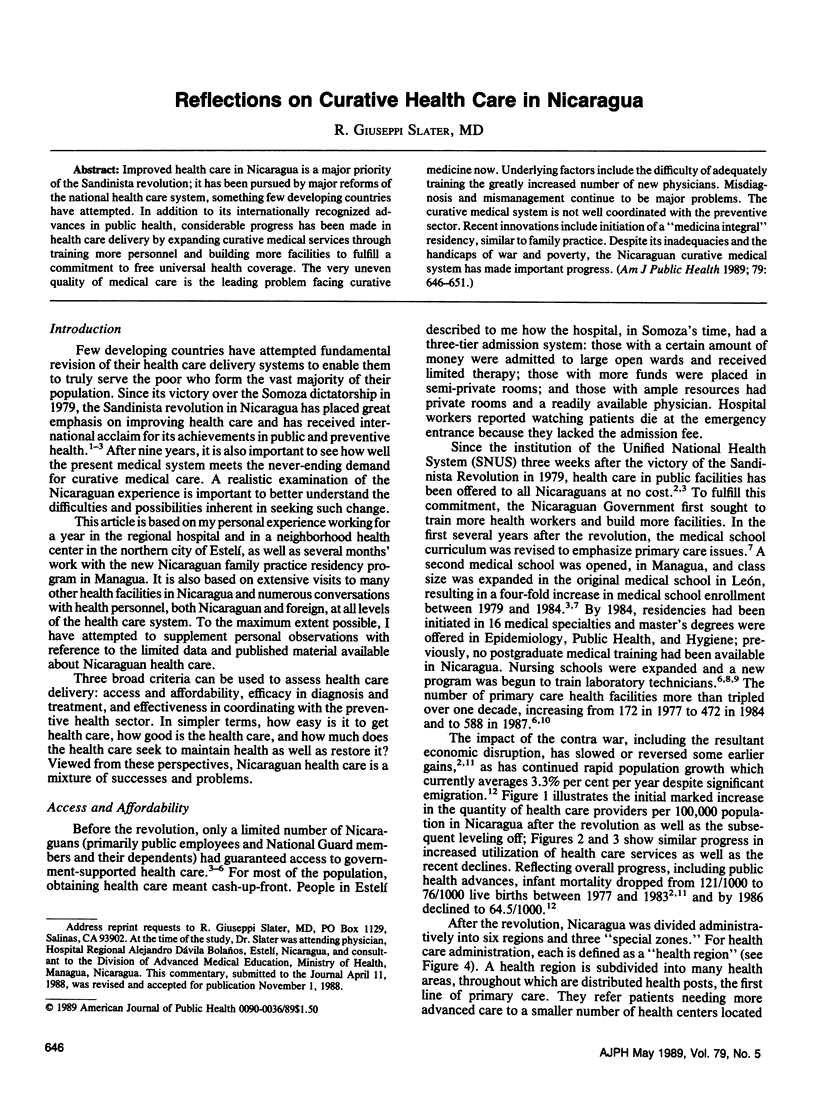
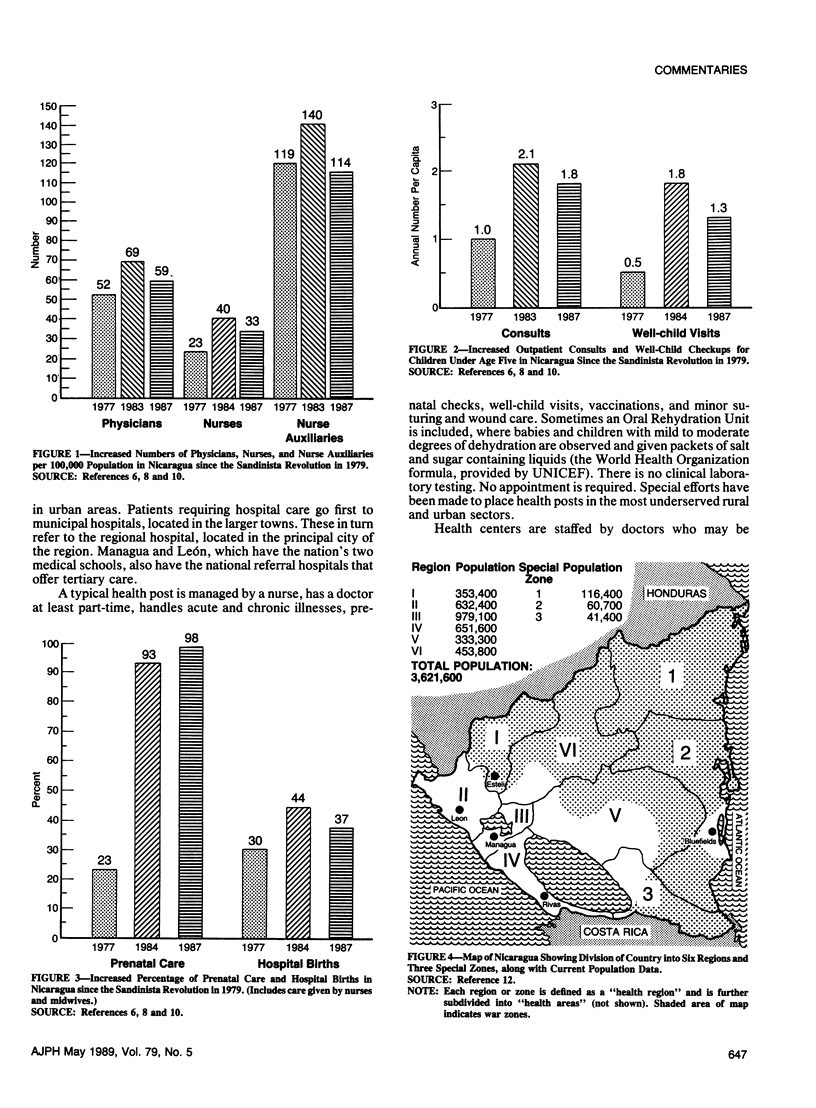
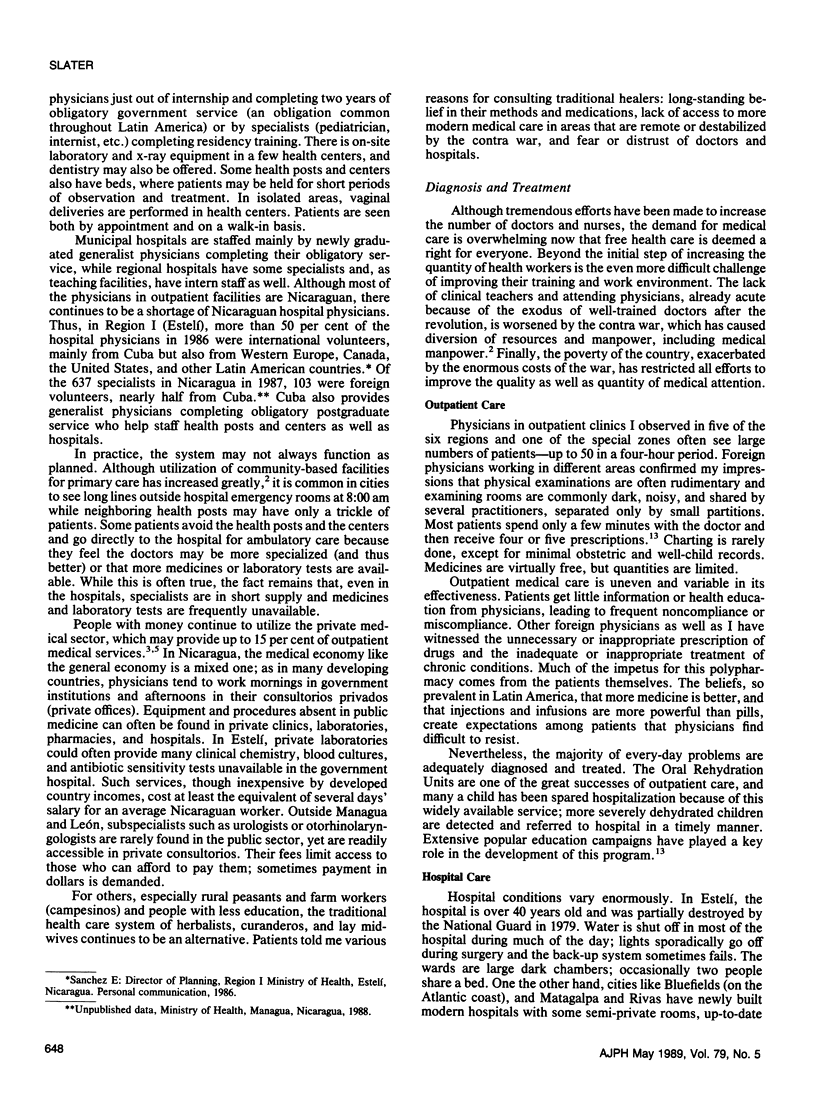
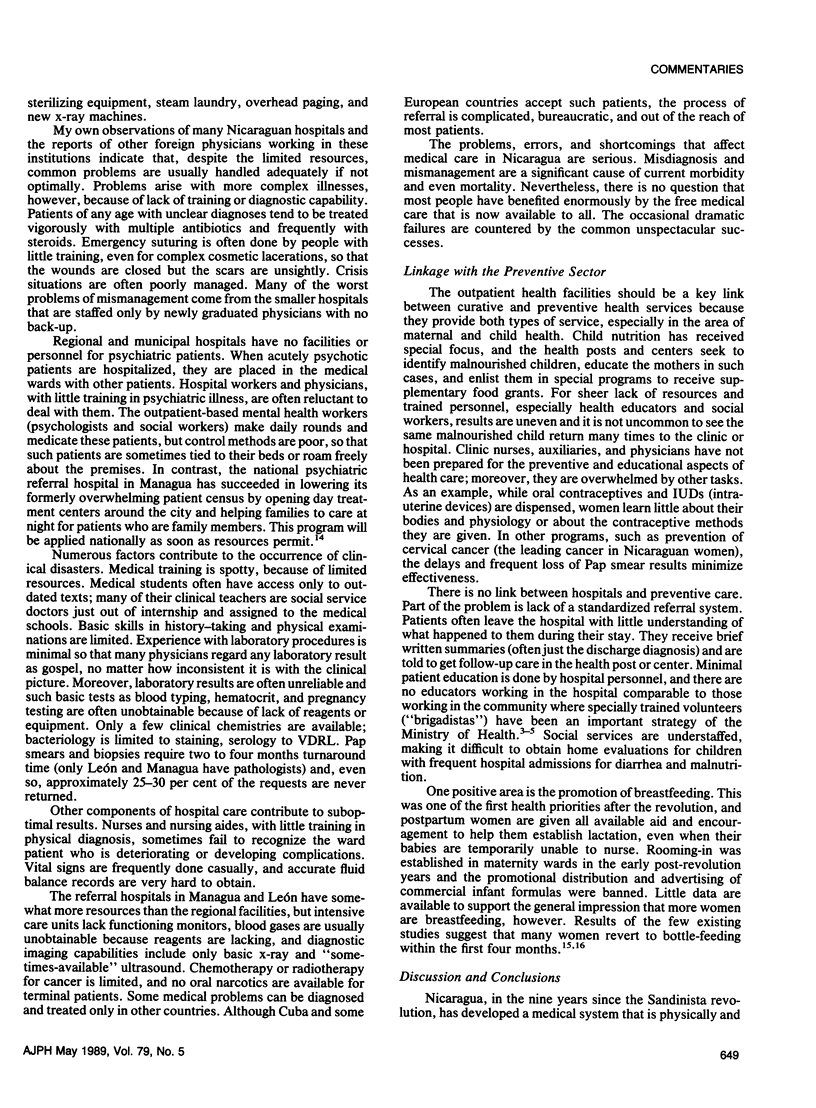
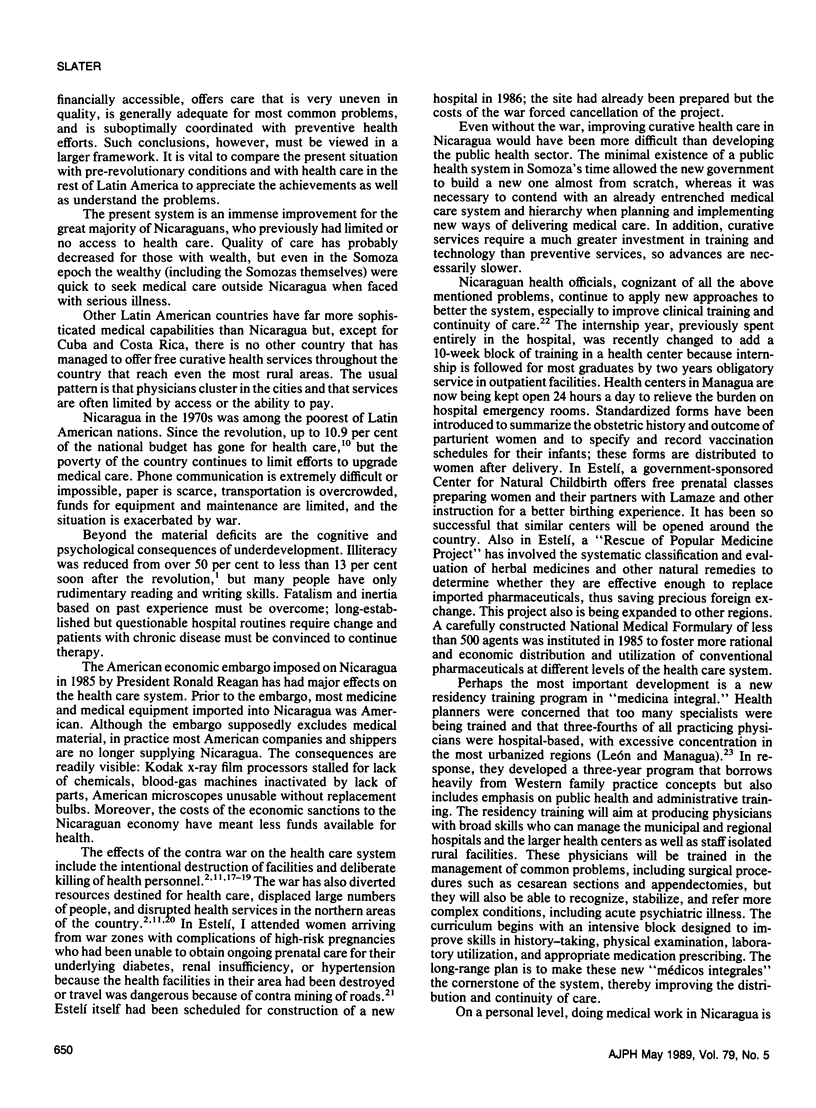
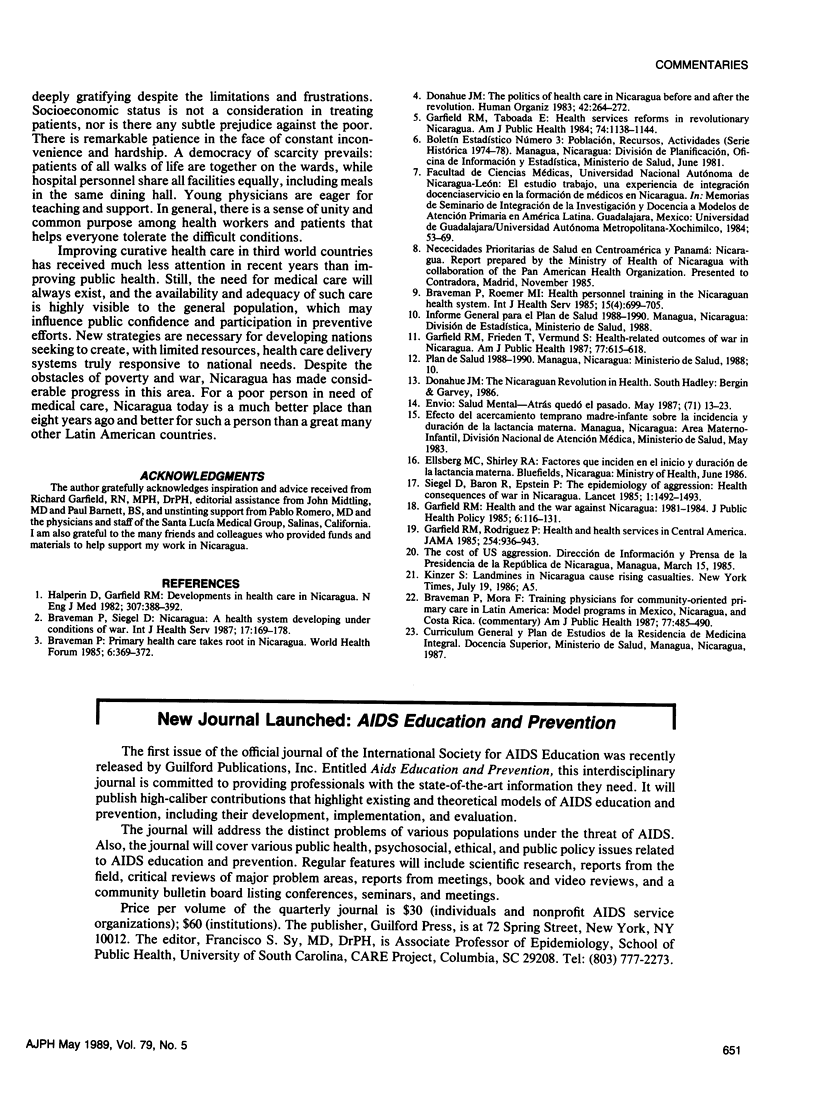
Selected References
These references are in PubMed. This may not be the complete list of references from this article.
- Braveman P. A., Roemer M. I. Health personnel training in the Nicaraguan health system. Int J Health Serv. 1985;15(4):699–705. doi: 10.2190/C0NM-T69A-1UB8-YFQ1. [DOI] [PubMed] [Google Scholar]
- Braveman P., Siegel D. Nicaragua: a health system developing under conditions of war. Int J Health Serv. 1987;17(1):169–178. doi: 10.2190/DB43-MWPL-2V12-WGXY. [DOI] [PubMed] [Google Scholar]
- Donahue J. M. The politics of health care in Nicaragua before and after the Revolution of 1979. Hum Organ. 1983 Fall;42(3):264–272. doi: 10.17730/humo.42.3.x737h47hqw3r2785. [DOI] [PubMed] [Google Scholar]
- Garfield R. M., Frieden T., Vermund S. H. Health-related outcomes of war in Nicaragua. Am J Public Health. 1987 May;77(5):615–618. doi: 10.2105/ajph.77.5.615. [DOI] [PMC free article] [PubMed] [Google Scholar]
- Garfield R. M. Health and the war against Nicaragua, 1981-84. J Public Health Policy. 1985 Mar;6(1):116–131. [PubMed] [Google Scholar]
- Garfield R. M., Rodriguez P. F. Health and health services in Central America. JAMA. 1985 Aug 16;254(7):936–943. [PubMed] [Google Scholar]
- Garfield R. M., Taboada E. Health services reforms in revolutionary Nicaragua. Am J Public Health. 1984 Oct;74(10):1138–1144. doi: 10.2105/ajph.74.10.1138. [DOI] [PMC free article] [PubMed] [Google Scholar]
- Halperin D. C., Garfield R. Developments in health care in Nicaragua. N Engl J Med. 1982 Aug 5;307(6):388–392. doi: 10.1056/NEJM198208053070634. [DOI] [PubMed] [Google Scholar]
- Siegel D., Baron R., Epstein P. The epidemiology of aggression. Health consequences of war in Nicaragua. Lancet. 1985 Jun 29;1(8444):1492–1493. doi: 10.1016/s0140-6736(85)92262-7. [DOI] [PubMed] [Google Scholar]


